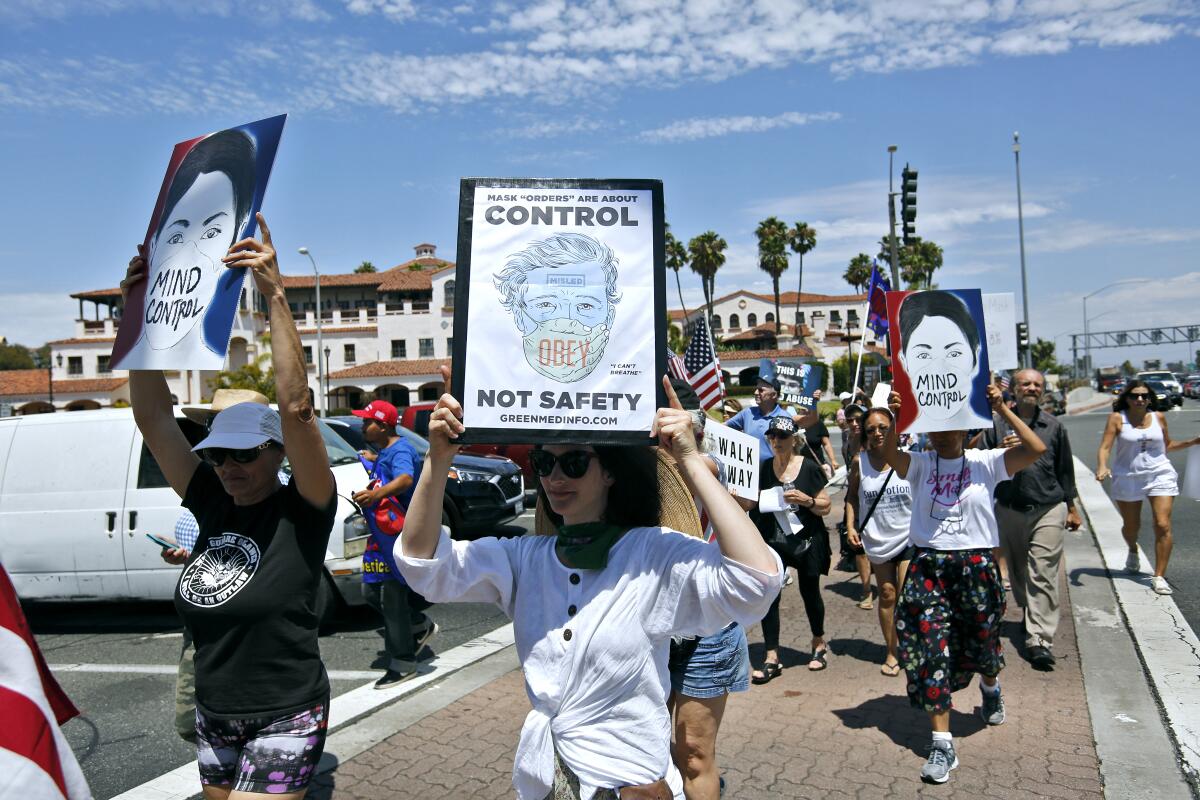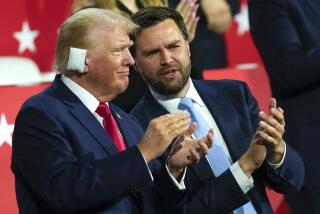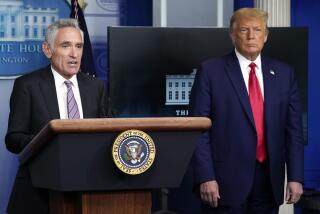Op-Ed: Americans used to respect public health. Then came COVID-19

- Share via
Some of the most alarming government actions since the COVID pandemic began have weakened state authority to safeguard public health. At least 26 states have removed traditional powers from local health departments, the institutions tasked with protecting us.
New state laws, for example, take away or limit health officials’ abilities to require masks, promote vaccinations, close restaurants and schools or even impose quarantines.
These limitations on local authority might seem inevitable in a country where voters often fear government overreach. But in fact these changes run counter to the historical trend in the U.S., which has overwhelmingly been to increase public health powers during epidemics.
By demonstrating that rigorous enforcement of school vaccine mandates would work in the 1970s, L.A. County had a powerful influence on the country.
At the beginning of European settlement in America, there were no government health departments. But, faced with devastating, terrifying and frequent outbreaks of deadly diseases, colonists established temporary boards of health to set public policy intended to save lives.
These temporary boards quarantined ships in the harbor, required sick residents to isolate at home and disbanded when the epidemics passed. But, over time, these boards became permanent. They increasingly expanded local and state authority to regulate community behavior in the name of public health. The public cooperated throughout the 19th and 20th centuries as Americans developed a sense of civic obligation and responsibility.
Because of this growing public commitment, the powers of cities and states to control disease increased with new epidemics. Repeated occurrences of yellow fever, cholera, smallpox and scarlet fever led to the establishment of public health departments that we recognize today.
Paid commissioners and health boards, and their staffs of inspectors and regulators, isolated the sick in contagious disease hospitals, vaccinated residents and created a sanitary environment. Health departments, often in conjunction with other city and state agencies, built clean water and sewer systems, regulated garbage collection and disposal, inspected restaurants, monitored school environments and set safety standards to ensure safe milk and food supplies. During epidemics, officials often forbade public gatherings, closed schools and bars and insisted on social distancing in churches.
Throughout our history, Americans learned that their individual liberty to oppose a health order during a time of community danger must be subsumed to the public good. The right of health officials to try to control infectious diseases was confirmed with the 1905 U.S. Supreme Court decision Jacobson vs. Massachusetts, which empowered local and state health authorities to order vaccinations during epidemic outbreaks when public health was threatened. If some individuals did not comply, they could be fined or jailed.
Although COVID has ignited controversy over local and state health agencies, public acceptance of their power and authority was widespread throughout the 20th century. In 1947, when smallpox threatened New York City, 6 million New Yorkers voluntarily lined up in the streets awaiting their inoculations to comply with the health department’s vaccination ruling. This public cooperation took less than a month and resulted in a very low number of infected people.
In addition, since the 1950s, the federal government has played an increasingly prominent role in public health. State governments sought federal help when disease crises crossed state lines and when implementation of effective action required interstate cooperation. During the 1947 smallpox outbreak, the U.S. Public Health Service traced the contacts of the individual who brought smallpox to New York, following his steps across the country — a task outside the purview of city health officials.
During the COVID pandemic, as in earlier health crises, state health departments have had to depend on federal support and national coordination to contain the disease. They have not had the capacity themselves to produce an effective vaccine, and since vaccines were developed, states have needed help with procurement and distribution. They still need help with maintaining equipment and personnel in hospitals to care for rapid increases in the number of sick people. And they need national leaders to promote the importance of vaccination and continued mask use.
Yet such coordination in local, state and federal efforts is weakened by the new state laws that limit health officials’ powers, which will leave us unable to deal with future pandemics effectively.
In earlier periods of American history, increased authority and funding for disease control would have been routine. Now the politicization of masking, testing and vaccination has made efforts to curb COVID even more difficult.
Historically the public response to community health danger was ruled by the need to care about others. This tradition has served the country well over the last 300 years. But it is no longer standard in America. The freedom to not wear a face mask has become more important to many people than any obligation to others. Choosing narrow personal liberties over community cooperation and protection does not bode well for our ability to withstand future crises.
Judith Walzer Leavitt is professor emerita in the history of medicine at the University of Wisconsin-Madison.
More to Read
A cure for the common opinion
Get thought-provoking perspectives with our weekly newsletter.
You may occasionally receive promotional content from the Los Angeles Times.












